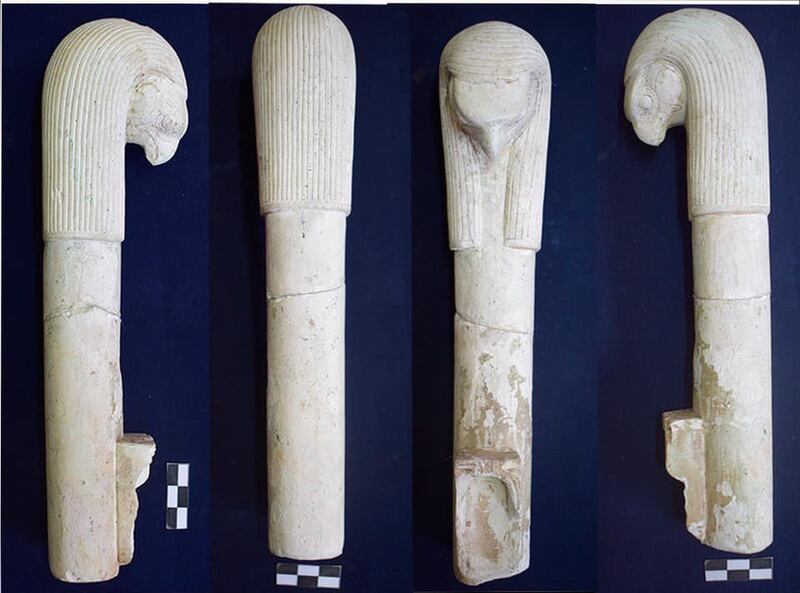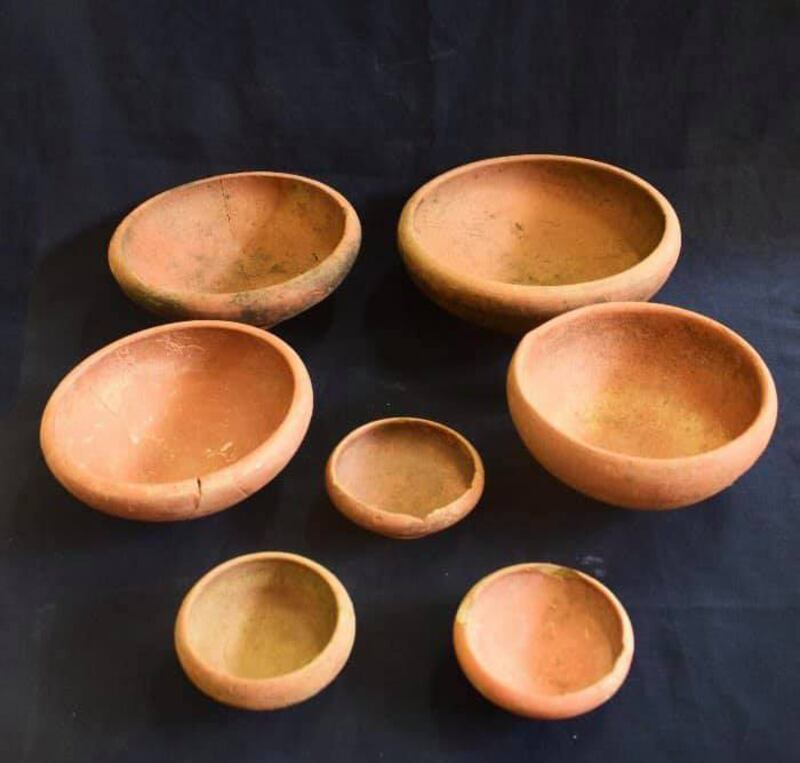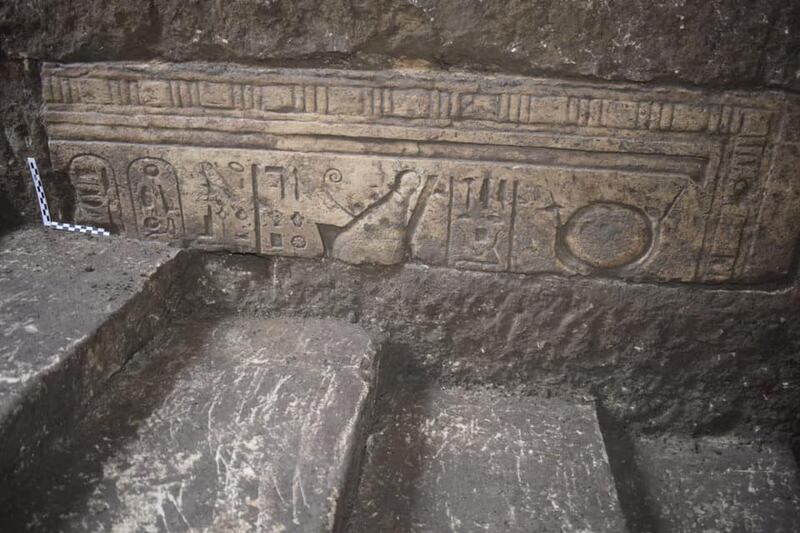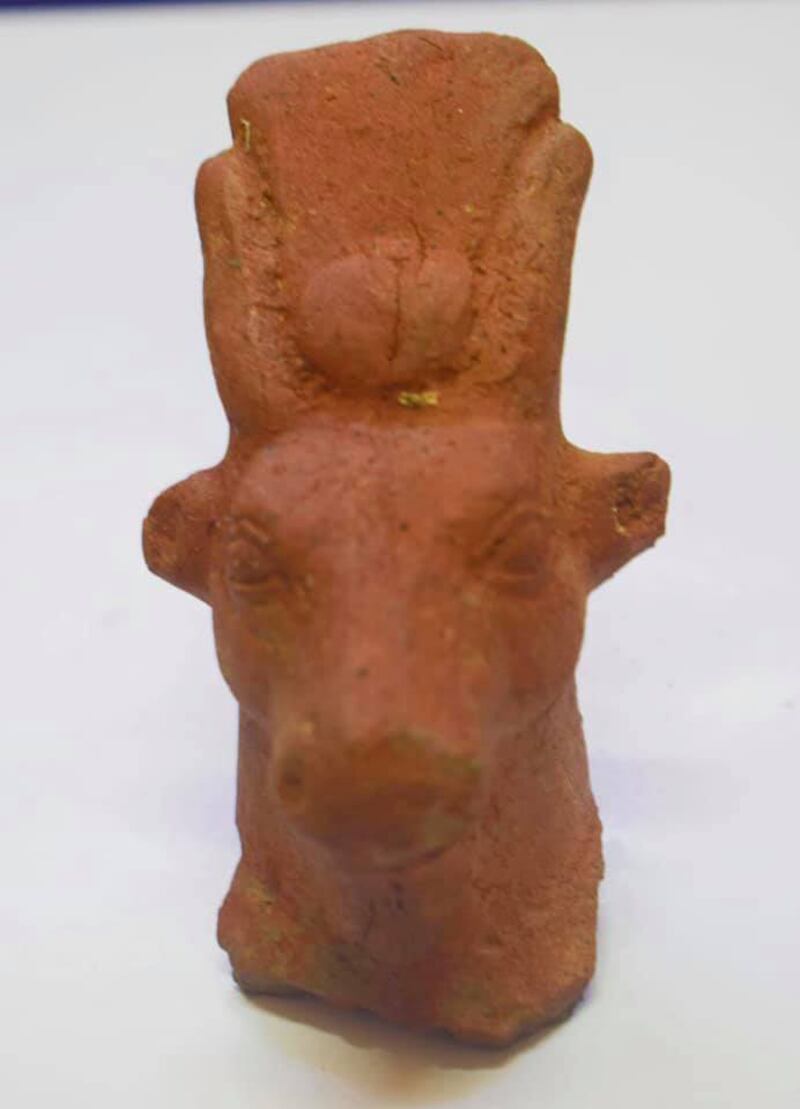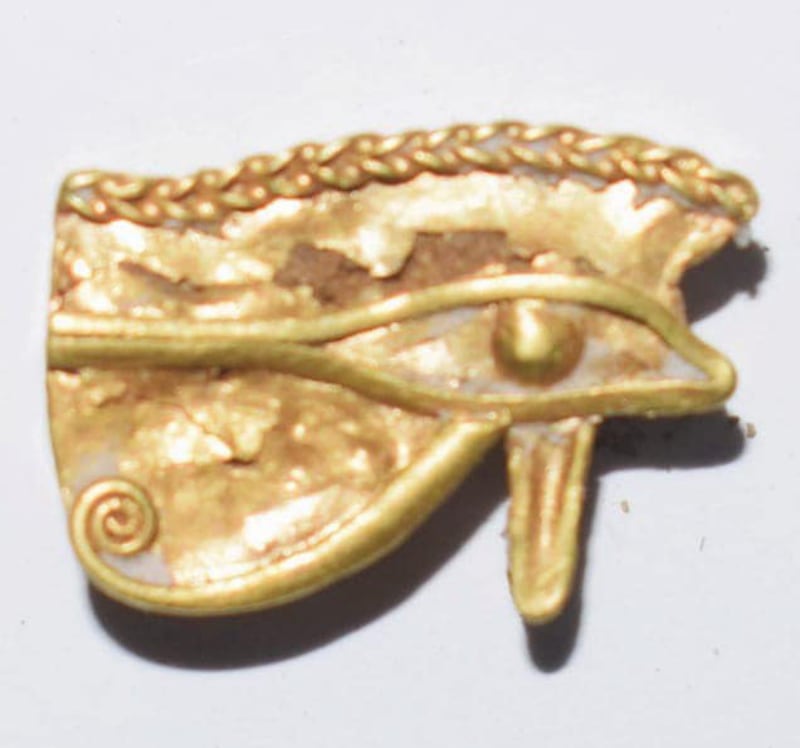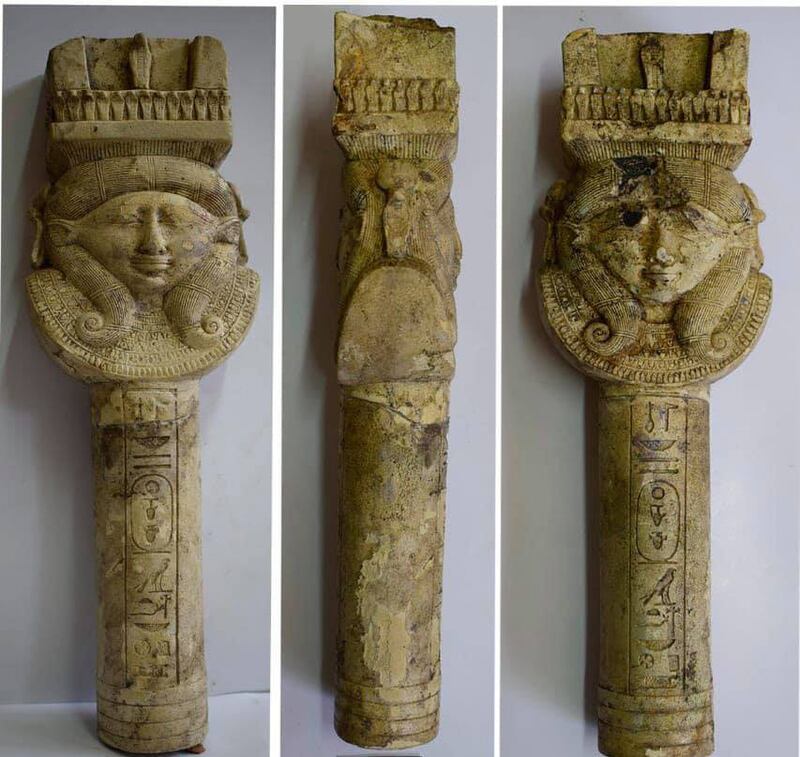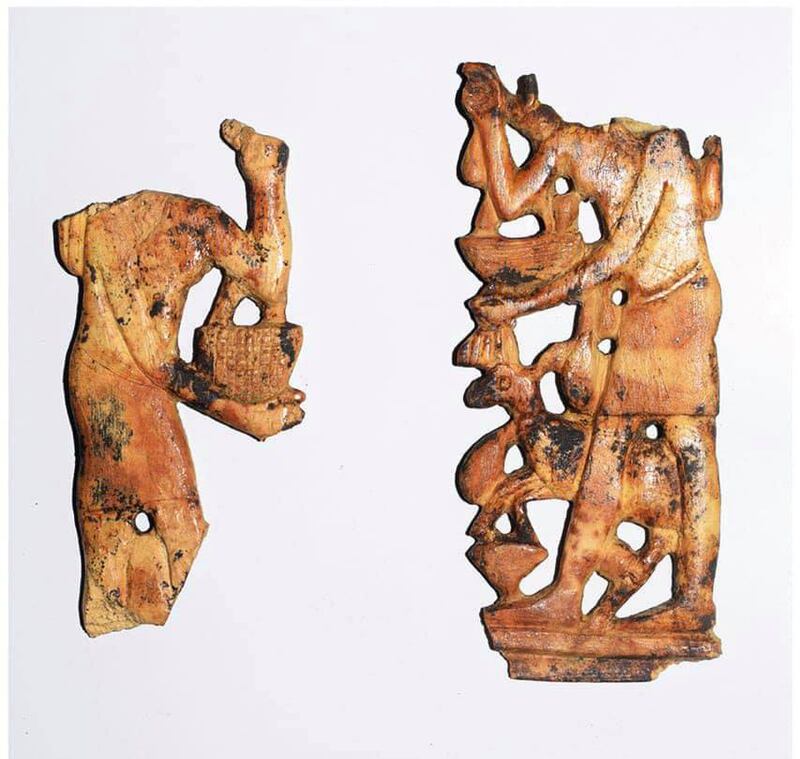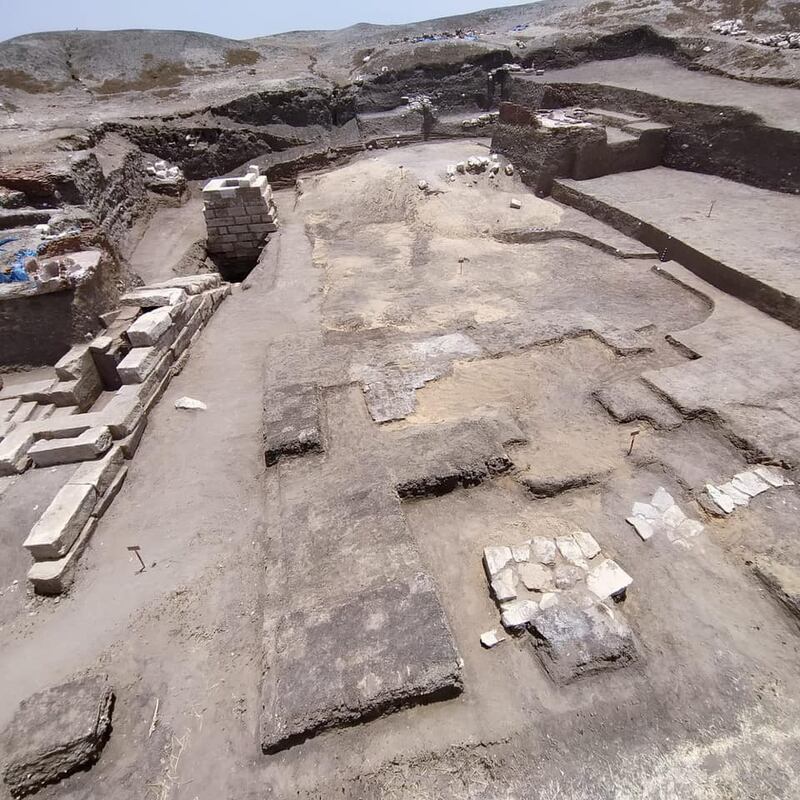Archaeologists at Tel El Farain in Egypt's Kafr El Sheikh governorate have uncovered ancient artefacts that include relics and other treasures that shine new light on religious practices in the Nile Delta.
Egypt's Supreme Council of Antiquities on Saturday revealed the latest findings at the site, 95 kilometres east of Alexandria in Egypt’s Nile Delta.
Dr Mustafa Waziri, the council’s secretary-general, said the find was significant because it included artefacts that were used in daily rituals by the site’s residents, many of whom were reported to have revered the goddess Hathor, who ruled over the sky, women, fertility and love.
Although the site is known in Egypt as Tel El Farain – meaning Hill of the Pharaohs in Arabic – the ancient city is better known by its Greek name, Buto.
Buto is one of the country’s most prominent archaeological zones, and past missions unearthed a palace dating to the Second Dynasty, which lasted between about 2890 BC and 2686 BC, and six bath houses.
One of the most recent eye-catching artefacts is a solid gold eye of Horus, used as a symbol of prosperity by ancient Egyptians, who also believed it would provide them with protection.
An incense holder adorned with the falcon head of Horus was among the find’s most prominent pieces, the council said.
Egypt's voyage into antiquity
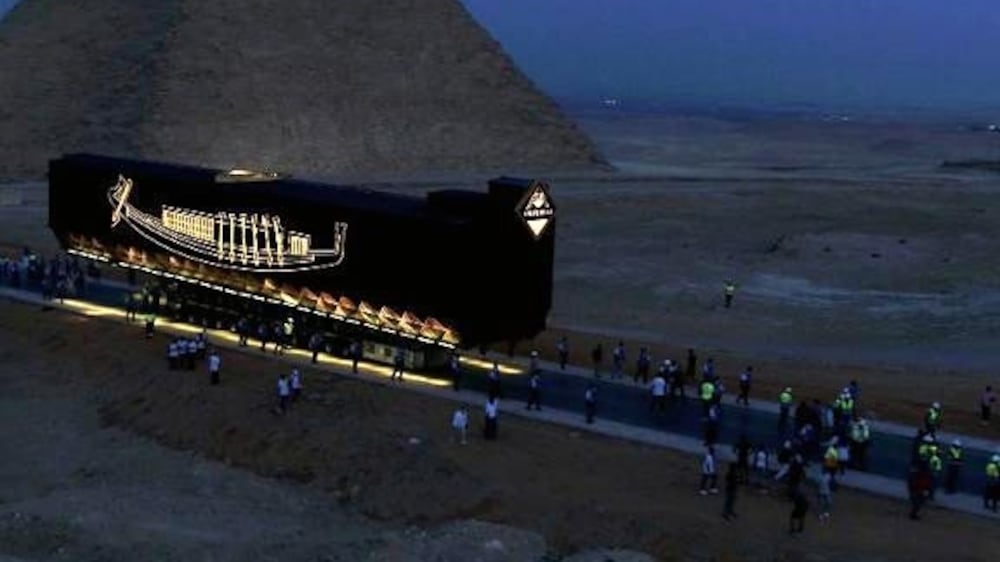
A limestone pillar topped with a carving of Hathor’s head and a number of incense holders made of faience were also among the treasures.
Small statues of the goddess Taweret, the protective goddess of childbirth and fertility, were also found at the site, along with a collection of gold flakes used to gild other artefacts.
Several clay vessels believed to be used to make offerings to Hathor during religious ceremonies were unearthed.
A fragment of a royal painting showing a king performing religious rites at Buto was found during the excavation work.
The artefacts were found buried in one of the highest mounds at Tel El Farain.
A large stone structure, believed to be a well used to store water for religious ceremonies, was also discovered buried in the hill. Nearby were the remains of a Ptolemaic-era bathroom, complete with a bathtub, a smaller basin, and a vessel used to heat water for baths.
Found near the bathroom was a rudimentary sewerage system which carried fresh water into the bath and took waste water away.
